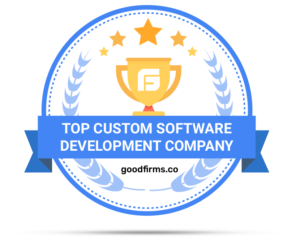Because custom software is, well, custom, it’s impossible to assign a blanket price range to all software development projects. Asking how much software development costs is akin to asking how much a house costs. Just as individual home prices vary based on their location, square footage, age, and added amenities, the price of software development can range dramatically and depends on a laundry list of factors.
Like home developers, software developers approach new builds with a few key questions for their clients. If you’re considering a new software project, here are the questions you can expect your software development team or outsourced provider to ask. Your answers to these questions will help everyone get a better idea of how complex –and thus, how costly– your software project will be.
1. What is the core problem you are trying to solve with this software?
If you can accurately and succinctly explain this to others, your needs may be less complex; however, if you have to spend a considerable amount of time explaining core issues, acknowledging tangential problems and providing context, your problem –and therefore solution– are likely more complicated.
2. How many problems are you trying to solve?
Projects that endeavor to solve several user problems or pain points with one product (or one suite of products) are generally more complex and pricey than a single solution aimed at resolving just one or two user issues.
3. How complex is the solution? Does it require a lot of customization?
More complex software development projects that take months –and in some cases years– to build will drive up cost. These types of builds are usually highly customizable, like the on-demand custom ring building solution Tech9 built for Lashbrook. The solution allows online shoppers to browse, build and customize rings right on Lashbrook’s website.

If you’re building software that will allow your users to have multiple customizing options, you’ll need a more robust software solution. Think of it this way: if a car manufacturer presents customers with three premade vehicle options, that software solution would be much cheaper than one that allows customers to pick a vehicle model and add on 10 additional customizations.
4. Has this been done before?
Have you seen similar software in your industry or other industries? Are you enhancing or modifying existing software? Are you replicating or improving on a competitor’s software, or are you building something completely new?
If you’re setting out to build proprietary or first-of-its-kind software, like many of the solutions coming to market that incorporate machine learning and AI, you should allow for longer development timelines and a greater budget. Even if similar software exists but is completely new to your vertical or sector, the complexity of the project will likely be much higher than it would if you were creating a solution that already exists in your marketplace.
5. Are you using third-party API integrations? If so, how many?
Another thing to consider is your software’s integration with APIs (Application Program Interfaces). Uber is probably the most well-known example of this. Uber’s app integrates with with services like Google Maps for navigation and Braintree and Stripe for payment operations.

Third-party integrations can sometimes result in quicker production and lower development costs because developers can plug in an off-the-shelf solution rather than creating one from scratch; however, it is important to remember that your software will be subject to third-party APIs that are not wholly within your realm of control. Sometimes this can result in more ongoing maintenance and the need to replace APIs with custom solutions down the road –all of which increase complexity and price.
6. Is there a subject-matter expert and stakeholder that will be involved in the UX design, prioritization, and development processes?
Engaged client sponsors, project managers and stakeholders who dedicate the time and energy needed to communicate frequently and effectively with the development team can reduce project time and cost. If you don’t have the key roles and players needed to properly fill these shoes in-house, you’ll need to rely on an outsourced provider to fill these positions for you.
7. Is there an MVP (Minimum Viable Product) version of the software that could be built faster, to validate your idea?
One way to cut down on the time and cost associated with new software builds is to create an MVP (Minimum Viable Product), which –in a nutshell– is the simplest solution to your problem. Back in the 1990s, Groupon tested initial user interest by creating a simple website that required coupon-hungry visitors to subscribe to their email in order to receive coupons in PDF format. Long before its robust website and mobile app, Groupon created an MVP to amass a huge email list of engaged customers.
Is there a way to build your software in small, incremental steps and test user interest at each stage of development? This approach allows you to learn exactly what features are necessary to have a functional product in the least expensive way possible. It also gives developers room to course correct at each stage to ensure the eventual product is well informed, well tested and well built.
8. How soon does a working version of the software need to be developed and launched?
Since hiring twice as many developers doesn’t mean it’ll be done in half the time, planning development resources against timelines is important. If possible, it’s best to consider phases or stages of the software project and take an incremental approach to timelines and intended launches. This will allow you and your development team to paint a more accurate picture of deadlines and budgets. It’s not necessarily true that the quicker you need your software launched, the more expensive it will be; however, time and effort required on a project are essential to determining the overall cost.
This concludes our three-part series on the basics of building your own software, where we broke down outsourcing vs. in-sourcing, the building blocks of assembling a high-performing software development team and, now, discussed what goes into estimating custom software development cost.
Did we miss something? Drop us a line, and let us know what topics we should cover next!






